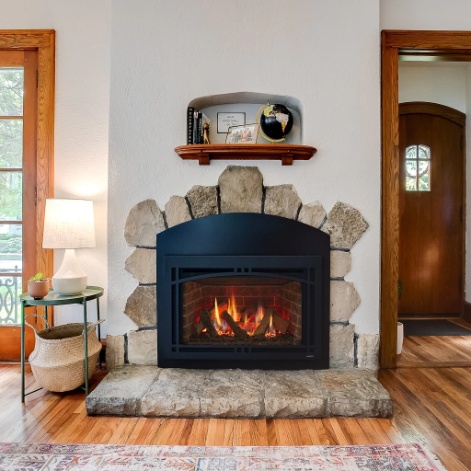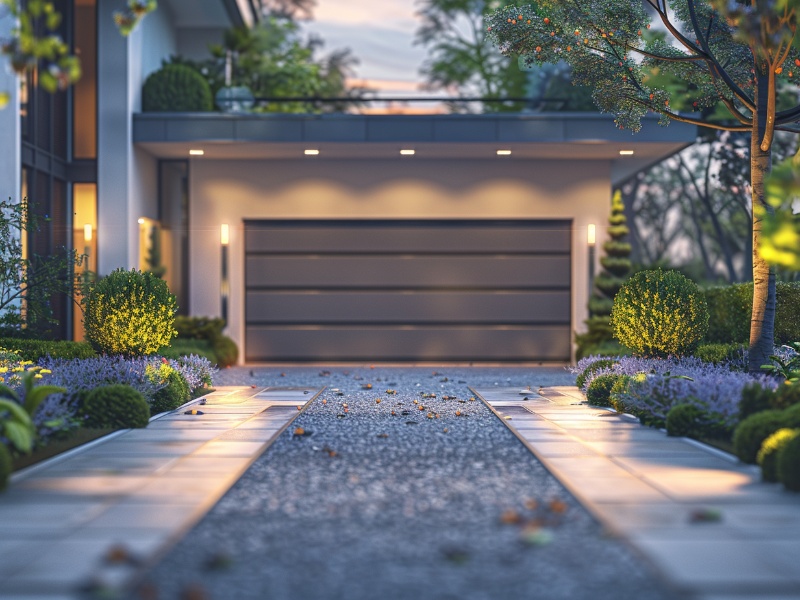Table of Contents
- 1 Key Takeaways:
- 2 What Are Garage Doors With Doors?
- 3 How Do Garage Doors With Doors Work?
- 4 What Are the Benefits of Garage Doors With Doors?
- 5 What Types of Doors Can Be Used for Garage Doors With Doors?
- 6 What Materials Are Used for Garage Doors With Doors?
- 7 How Can I Choose the Right Garage Door With Door for My Home?
- 8 What Are the Maintenance Requirements for Garage Doors With Doors?
- 9 How Much Do Garage Doors With Doors Cost?
- 10 Frequently Asked Questions
Garage doors with doors offer a convenient and space-saving solution. They combine the functionality of a traditional garage door with the accessibility of a pedestrian entry door. In this article, we’ll explore the mechanics behind these innovative structures. We will also explore their numerous benefits, as well as the various types of doors and materials used.
Whether you’re considering a traditional hinged door, a sliding door, a folding door, or a roll-up door, we’ll provide insights into the suitability and advantages of each. We’ll delve into the selection process, maintenance requirements, and cost considerations to help you make an informed decision for your home.
If you’re looking to enhance the security, accessibility, and aesthetics of your garage, this comprehensive guide will provide you with all the essential information you need.
Key Takeaways:
- Double the functionality with garage doors that have a built-in door for easy access to your garage.
- Choose from a variety of door types and materials to customize the look and function of your garage door with door.
- Garage doors with doors offer space-saving benefits, improved security, and enhanced aesthetics for your home.
What Are Garage Doors With Doors?
Garage doors with doors refer to a unique design concept that combines the functionality of traditional garage doors with the convenience of having additional doors within the garage space.
Homeowners are increasingly opting for garage doors with doors due to their practical benefits. These doors offer easy access to the garage, enhanced security, and contribute to the overall aesthetic appeal of the property. There is a wide range of design options available, including various materials, colors, and styles,. This allows homeowners to customize the look of their garage to complement the architectural style of their home.
When considering the installation of garage doors with doors, several factors come into play. It is crucial to assess the available space, consider the primary purpose of the garage, and evaluate the frequency of use. Homeowners should evaluate the insulation properties of the doors to ensure energy efficiency and climate control within the garage space. Ultimately, the decision to invest in garage doors with doors can significantly enhance the functionality and visual appeal of the entire property.
How Do Garage Doors With Doors Work?
Garage doors with doors operate by integrating the traditional garage door system with additional entry points. These entry points accommodate the size and accessibility needs of a double garage or the storage of two cars.
The garage door openers play a crucial role in the smooth functioning of these doors. They allow convenient, remote-controlled operation.
It’s essential to ensure that the garage door size is appropriate for a double garage.
When installing a garage door with a door, precise measurements and alignment are vital to guarantee a seamless fit. This process involves assessing the available space, choosing the right material and design, and securing professional installation.
What Are the Benefits of Garage Doors With Doors?
Garage doors with doors offer a multitude of benefits. They are a great addition to any home. Whether you need to accommodate one or two cars, the added functionality of extra doors provides great practicality and convenience.
Space-Saving
One of the primary benefits of garage doors with doors is their space-saving design. This is especially valuable for homeowners with a single garage looking to maximize functionality. It is also valuable for those with a double garage seeking efficient access options.
Garage doors with doors offer a practical solution for saving space. The vertical operation of these doors eliminates the need for additional clearance space inside and outside the garage. This allows you to utilize the entire driveway and garage area without obstruction.
For single garages, where space is often limited, these doors can provide a seamless and compact solution. They free up valuable square footage. On the other hand, for double garages, the ease of access and efficient use of space can enhance the overall convenience and functionality of the space.
Easy Access to Garage
Another significant benefit of garage doors with doors is the ease of access they provide to the garage space. They offer a practical design solution for homeowners with a single or double garage to keep in mind.
These types of doors feature a convenient entry point, allowing homeowners to access their garage with ease. This is especially useful when carrying groceries, tools, or other items. The incorporation of doors within the garage doors adds a layer of versatility, catering to different needs and preferences.
The aesthetic appeal of these doors enhances the overall exterior of the house, creating a cohesive and visually appealing design.
Improved Security
Garage doors with doors contribute to improved security for the garage space. This provides homeowners with an effective system to store their vehicles and other items securely.
The enhanced security features of garage doors with doors play a vital role in deterring unauthorized access and protecting valuable possessions. These doors are equipped with advanced locking mechanisms, durable materials, and sturdy construction. They offer a reliable barrier against intruders and potential theft. Modern garage doors can be integrated with smart security systems. This allows remote monitoring and control for added peace of mind. By prioritizing security, homeowners can safeguard not only their vehicles but also valuable tools, equipment, and personal belongings stored in the garage, ensuring a safe and protected environment for their property.
Enhanced Aesthetics
The inclusion of doors within garage doors not only enhances the practicality but also contributes to the overall aesthetics of the space, offering homeowners new design ideas to consider for their ideal garage space.
Garage doors with intricately designed doors can transform the façade of a house, adding an element of elegance and sophistication. The aesthetic benefits are evident as these doors can be customized to complement the architectural style of the home, creating a cohesive and visually appealing exterior. Homeowners have the opportunity to explore a wide range of materials, colors, and finishes to perfectly align with their design preferences.
By focusing on the aesthetic aspect of garage doors, individuals can infuse their personal touch into the overall appearance of their property, elevating its curb appeal and making a lasting impression. This attention to detail can enhance the value of the home while creating a visually captivating space that seamlessly blends with the surrounding landscape.
What Types of Doors Can Be Used for Garage Doors With Doors?
Various types of doors can be integrated into garage doors, offering homeowners a range of options to consider based on their space and design decision-making process.
When choosing a door for the garage, there are several options to explore. One common choice is the traditional up-and-over door, which is affordable and provides excellent security.
Alternatively, homeowners may opt for sectional doors, known for their space-saving design and easy operation. For those seeking a modern touch, roller doors offer convenience and a sleek appearance. Side-hinged doors are perfect for those who prioritize easy access and traditional aesthetics.
Considering these options is crucial to finding the perfect garage door to complement a home’s overall design.
Traditional Hinged Doors
Traditional hinged doors are a popular choice for integrating into garage doors with doors, offering practicality and design considerations for homeowners to think about when making their selection.
These types of doors provide a classic and timeless look that can enhance the overall aesthetic appeal of the garage and the home’s exterior. They also offer a wide range of design options, from traditional paneling to more modern styles, allowing homeowners to select a door that complements their property’s architectural style and personal preferences.
Hinged doors often provide a wider opening than other garage door types, allowing for easier access and maneuverability of larger vehicles and equipment. Their straightforward operation and sturdy construction make them a durable and reliable choice for many homeowners.
Sliding Doors
Sliding doors present an excellent space-saving option for homeowners with one or two cars, offering a great decision-making solution when considering the integration of doors into their garage doors.
These types of doors are particularly beneficial for those seeking to make the most of limited space while still accommodating their vehicles. The smooth and effortless operation of sliding doors makes them practical and functional, especially in situations where traditional swing doors may not be suitable due to space constraints.
Folding Doors
Folding doors offer practical and design benefits for homeowners with a single or double garage, providing a solution to keep in mind when seeking an ideal integration for their garage doors with doors.
One of the key advantages of folding doors is their space-saving design. Unlike traditional swinging or sliding garage doors, folding doors open by folding inward or outward, requiring minimal space. This makes them ideal for garages with limited space or for homeowners who want to maximize their garage’s usable space.
Folding doors often feature a sleek and modern appearance, enhancing the overall aesthetics of the garage.
Roll-up Doors
Roll-up doors offer a practical and design-oriented solution for homeowners with a single or double garage to keep in mind when considering the integration of doors into their garage doors.
With their space-saving design, roll-up doors are an excellent choice for garages where maximizing space is a priority. Their vertical operation ensures that the entire ceiling space can be utilized, making them particularly suitable for compact or low-ceiling garages. Their sleek and modern appearance adds a stylish touch to any garage, enhancing its overall aesthetic appeal. Another benefit is the efficient insulation they provide, which can contribute to energy savings and regulated temperatures within the garage.
What Materials Are Used for Garage Doors With Doors?
Garage doors with doors can be constructed using various materials, including wood, aluminum, steel, and fiberglass, each offering unique features and benefits for homeowners to consider for their garage space.
Wooden garage doors add a classic and timeless aesthetic to a home, providing natural beauty and warmth. They can be customized with various designs and stains, offering a traditional and elegant look.
On the other hand, aluminum garage doors are lightweight, durable, and resistant to rust and corrosion. These doors are a popular choice because of their low maintenance and modern appearance.
Steel garage doors offer strength, security, and insulation, making them a reliable option for homeowners prioritizing durability and energy efficiency.
Fiberglass garage doors provide a low-maintenance alternative with excellent resistance to dents, cracks, and warping, making them ideal for harsh weather conditions.
Wood
Wood is a popular material choice for garage doors, offering a blend of aesthetics and durability for homeowners seeking an elegant and long-lasting solution for their garage space.
The natural beauty of wooden garage doors adds a touch of warmth and charm to the exterior of a home, creating a welcoming and inviting feel. Wood can be customized to fit various architectural styles, from traditional to contemporary, providing versatility and enhancing the overall curb appeal.
Furthermore, wooden doors are remarkably durable, capable of withstanding the elements and maintaining their structural integrity over time. With proper maintenance, they can stand the test of time, making them a sustainable and cost-effective option for homeowners.
Aluminum
Aluminum is a lightweight and corrosion-resistant material option for garage doors with doors, offering practical and durable qualities for homeowners looking for a low-maintenance solution for their garage space.
Its lightweight nature makes it easier to operate, reducing strain on the garage door opener and minimizing wear and tear over time. Its corrosion resistance ensures that the door maintains its aesthetic appeal and structural integrity even in harsh weather conditions.
With minimal maintenance requirements, aluminum garage doors are an ideal choice for busy homeowners, freeing up time and effort usually spent on upkeep. Their durability also means they can withstand frequent use, offering long-lasting performance and value.
Steel
Steel is a material known for its strength and security, making it an ideal choice for garage doors, offering homeowners a robust and reliable solution for safeguarding their garage space.
One of the key advantages of steel as a material for garage doors is its durability. It is capable of withstanding harsh weather conditions, impacts, and potential intrusions, providing enhanced security for valuable items stored in the garage. Steel doors are low maintenance, ensuring long-lasting protection without the need for frequent repairs or replacements.
In addition to its strength, steel also offers thermal insulation properties, regulating the temperature within the garage and contributing to energy efficiency. This not only creates a more comfortable environment but also helps save on heating and cooling costs. When combined with modern locking systems, steel garage doors provide a formidable barrier against unauthorized access, adding an extra layer of security to the entire property.
Fiberglass
Fiberglass offers insulation and versatility as a material choice for garage doors with doors, providing homeowners with a practical and adaptable solution for maintaining the desired climate within their garage space.
Its exceptional insulation properties help regulate the temperature, preventing heat from escaping during colder months and keeping the interior cool in warmer weather. This makes fiberglass garage doors an energy-efficient option, reducing heating and cooling costs as it helps create a more consistent and comfortable environment inside the garage.
Fiberglass is renowned for its versatility, allowing for a wide range of design options. Whether homeowners prefer a traditional, carriage-style look or a more contemporary appearance, fiberglass can be molded to emulate various materials, such as wood or steel, providing a customizable aesthetic appeal.
How Can I Choose the Right Garage Door With Door for My Home?
Choosing the right garage door with door for your home involves evaluating the options available. It also involves making the best decision based on the size of the garage, the number of cars, and the specific requirements of the doors for optimal functionality and aesthetics.
It’s essential to start by considering the dimensions of your garage space. Measure the width, height, and depth to ensure the door you select fits perfectly. Next, assess the number of cars you have or anticipate having in the future. This will dictate whether a single or double door is more suitable.
Ponder over the desired functionality , as each provides distinct advantages. It’s crucial to balance functionality with the visual appeal. Consider materials, colors, and styles that complement your home’s architecture.
What Are the Maintenance Requirements for Garage Doors With Doors?
Maintaining garage doors with doors involves practical considerations and design-related aspects that homeowners should think about to ensure the optimal functionality and longevity of the system.
Proper maintenance of garage doors with doors includes regular inspections for any signs of wear and tear. It also includes lubrication of moving parts, and cleaning to prevent dust and debris from causing operational issues. Ensuring that the door tracks are properly aligned and the springs are in good condition is crucial for smooth operation. Design aspects such as choosing durable materials and matching the door style to the overall property aesthetic also play a significant role in the long-term functionality and appeal of the garage doors with doors system.
How Much Do Garage Doors With Doors Cost?
The cost of garage doors with doors varies based on practical and design-related factors. This makes it essential for homeowners with a single or double garage to keep in mind the specific requirements and budget considerations when evaluating the overall investment.
Factors such as the material of the garage door, insulation properties, and the mechanism for opening and closing play a significant role in determining the cost. For instance, wooden garage doors generally cost more due to their aesthetic appeal, while steel doors are more budget-friendly and offer durability.
It’s important to consider the design elements, such as the style, color, and additional features like windows or decorative hardware, as they can enhance the overall appearance but also impact the cost. Homeowners should also factor in the installation charges, maintenance requirements, and potential long-term savings on energy efficiency when making their decision.
Frequently Asked Questions
1. What are the benefits of having a garage door with a built-in door?
Having a garage door with a built-in door offers double the functionality. This allows you to easily access your garage while also having a secondary entrance for convenience.
2. What styles of garage doors are available with built-in doors?
There are various styles of garage doors that come with built-in doors. These include traditional swing-out doors, modern sliding doors, and even roll-up doors that have a built-in walk-through section.
3. Can I customize the design of my garage door with a built-in door?
Yes! Many garage door manufacturers offer customization options for both the main garage door and the built-in door. This allows you to choose the materials, color, and design that best fits your home’s aesthetic.
4. Is it difficult to maintain a garage door with a built-in door?
No. Regular maintenance for a garage door with a built-in door is similar to any traditional garage door. However, it is important to make sure the built-in door’s hinges and hardware are regularly lubricated for smooth operation.
5. Are garage doors with built-in doors secure?
Yes, garage doors with built-in doors are designed with security in mind. They can be equipped with sturdy locks and reinforced hinges to ensure the safety of your home.
6. Can I install a garage door with a built-in door myself?
It is not recommended to install a garage door with a built-in door yourself. It requires knowledge and experience in garage door installation. It’s best to hire the professionals at Dreifuss Fireplaces (& Doors) to ensure proper installation and functionality. Contact us today!
Latest Articles

What Is An NG (Natural Gas) Indicator And Why You Need It For Your Fireplace
Table of Contents1 Understanding Natural Gas Fireplaces2 What is an NG Indicator?3 Importance of NG Indicators for Safety4 Types of NG Indicators5 Installation and Maintenance of NG Indicators6 Signs of a Faulty NG Indicator7 Frequently Asked Questions Natural gas fireplaces are a favored option among numerous homeowners due to their convenience and effectiveness. But, what is an NG (Natural Gas) indicator and why you need it for your fireplace? It is imperative to comprehend how they function and the significance of having an NG (Natural Gas) indicator for safety purposes. This article delves into the definition and significance of NG indicators. We will discuss the potential hazards associated with the absence of one and the various types of indicators accessible. Also, we will discuss installation and maintenance recommendations, and methods to recognize and rectify issues with malfunctioning indicators. Stay well-informed and ensure the safety of your home by referring to this exhaustive guide. Understanding Natural Gas Fireplaces Natural gas fireplaces serve as an efficient and convenient heating option for numerous households. They utilize natural gas as a fuel source to deliver consistent warmth and ambiance. How They Work and Why They Need NG Indicators The operation of natural gas fireplaces involves igniting natural gas to generate heat. This process requires diligent monitoring to ensure both safety and efficiency, a task facilitated by the use of NG indicators. NG indicators play a critical role in detecting potential gas leaks. They enable residents to promptly address and mitigate any associated hazards. Through continuous monitoring of gas levels and providing timely warnings and alerts, NG indicators uphold a secure indoor environment. It is imperative to ensure that these indicators function properly to facilitate the effective operation of natural gas fireplaces. This helps mitigate the inherent risks linked to gas leaks. What is an NG Indicator? An NG indicator is a specialized device equipped with advanced sensors and technology. It is specifically designed to detect natural gas leaks and monitor gas pressure in appliances, such as fireplaces. Definition and Purpose The NG indicator functions as a detector that monitors gas appliances for potential leaks. It provides essential functionality to ensure safety in households utilizing natural gas. These detectors play a crucial role in protecting residences by notifying occupants of dangerous gas leaks long before they escalate into perilous situations. Through continuous monitoring of gas levels in the vicinity, NG indicators offer an additional layer of protection. This is particularly important in properties that rely on gas-operated fireplaces or stoves. These devices not only help avert potential disasters but also enhance the overall peace of mind of homeowners. They assure them that their living spaces are equipped with reliable safety features. Importance of NG Indicators for Safety Natural gas indicators are essential for maintaining safety in households equipped with natural gas appliances. These devices serve as a proactive measure to promptly detect gas leaks. This offers homeowners a sense of security and assurance. Potential Dangers of Not Having an NG Indicator The absence of an NG indicator in residences equipped with natural gas appliances can pose significant hazards. This includes the risk of undetected gas leaks , carbon monoxide poisoning , and pilot outages that may lead to dangerous situations. These potential risks can profoundly impact indoor air quality. They directly influence the health and safety of individuals residing in the household. Undetected gas leaks can go unnoticed, gradually permeating the air and creating a potentially explosive environment. Insufficient ventilation from undetected exposure to carbon monoxide can lead to serious health complications. These range from mild symptoms such as dizziness to fatal poisoning. Without proper monitoring from an NG indicator, families are left susceptible to these concealed threats. This underscores the critical importance of implementing proactive measures to mitigate such risks. Types of NG Indicators Indicators for Natural Gas (NG) are available in diverse types. Each presents distinct detection capabilities tailored to specific requirements, encompassing both manual and automated alternatives. Manual vs. Automatic Indicators Manual NG indicators require user intervention for monitoring gas levels and identifying leaks. On the other hand, automatic indicators employ sophisticated technology to deliver continuous, real-time monitoring. This heightened efficiency and oversight enhance safety protocols. Conventional manual indicators rely on individuals to physically inspect and evaluate gas levels periodically. This renders them more susceptible to human errors. Conversely, automatic indicators feature sensors capable of promptly detecting even the most minute fluctuations in gas levels. This establishes a more dependable and precise monitoring mechanism. Automatic indicators can activate alerts and shut-off systems upon detecting a leak. This ensures immediate action to avert potential hazards. This advanced technology enhances safety protocols and instills a sense of command and assurance among users. Installation and Maintenance of NG Indicators The reliable and accurate performance of NG indicators necessitates proper installation and consistent maintenance. This often entails professional installation and adherence to recommended service guidelines. Proper Installation and Regular Maintenance Tips The proper installation of NG indicators involves adhering to the specifications in the user manual. Maintenance protocols entail strict adherence to a predetermined maintenance schedule to ensure sustained operational efficiency. During the installation phase, it is imperative to verify that the NG indicators are securely affixed in the designated location as stipulated by the manufacturer. Crucial steps include confirming power source compatibility and ensuring proper grounding of the device to optimize performance. Calibration of the indicator must be executed meticulously to ensure precise readings. Regarding maintenance, essential practices include regular inspection for signs of wear, thorough cleaning of the indicator components, and routine functionality tests. By allocating time to a consistent maintenance regimen, the NG indicator can operate with optimal efficiency over an extended duration. Signs of a Faulty NG Indicator Recognizing indicators of a malfunctioning NG indicator is essential for upholding safety and performance standards. Inaccuracies and detection issues can undermine the efficacy of these devices. Identifying and Addressing Issues The process of identifying and addressing issues related to NG (natural gas) indicators requires a systematic troubleshooting approach. This ensures their optimal performance

What You Need To Know About Gas Log Set Safety And Installation Considerations
Table of Contents1 Understanding Gas Log Sets2 Safety Considerations for Gas Log Sets3 Installation Guidelines for Gas Log Sets4 Maintaining and Troubleshooting Gas Log Sets5 Frequently Asked Questions Gas log sets are a favored option among homeowners seeking to enjoy the comfort and atmosphere of a conventional fireplace without the inconvenience of wood. This article tells you what you need to know about gas log set safety and installation considerations. Before incorporating one into your residence, it is imperative to understand the safety considerations associated with their use. This discussion delves into the potential hazards linked with gas log sets. It presents crucial precautions to uphold the safety of your home. Also, it outlines proper installation procedures and offers insight into common errors to avoid. Finally, it provides advice on maintenance and troubleshooting. Gain comprehensive knowledge on gas log set safety and installation considerations. Understanding Gas Log Sets Comprehending gas log sets is essential for individuals seeking to elevate their fireplace experience, and for gas lag set safety and installation. These heating appliances can operate on either natural gas or propane. In addition, they are available in a range of styles, including vented, ventless, and vent-free options. They provide an array of benefits and customization opportunities through various fireplace accessories. What are Gas Log Sets? Gas log sets are meticulously crafted artificial logs. They are designed to imitate the appearance and functionality of authentic wood logs within fireplaces. These gas log sets typically consist of ceramic or refractory concrete logs that have been skillfully molded and painted. This allows them to replicate the natural grain and texture of real wood. The logs are arranged in various configurations within the fireplace. They establish a realistic and welcoming ambiance. In addition to the logs, gas log sets often include fireplace accessories such as glowing embers. Accessories also include decorative stones, and even pine cones to enhance the overall aesthetic appeal. Homeowners can select from an array of placement options. These include traditional wood stack, cascading driftwood, or a contemporary geometric arrangement. Homeowners can align their preferred style and design preferences. Safety Considerations for Gas Log Sets Safety considerations for gas log sets are of utmost importance to guarantee a secure and pleasant fireplace experience. It is essential to address potential hazards such as carbon monoxide exposure, gas leaks, and fire safety to maintain a safe environment for homeowners. Potential Hazards and Precautions Gas log sets come with potential hazards that must be taken seriously, including the risks of gas leaks, carbon monoxide poisoning, and fire incidents. It is imperative to establish and adhere to rigorous safety measures to ensure the well-being of individuals and properties involved in the use of gas log sets. Gas leaks represent a significant hazard when utilizing gas log sets. They can result in the accumulation of combustible gas within the premises, heightening the possibility of explosions or fires. Carbon monoxide, an insidious gas generated during incomplete combustion, poses a grave threat due to its colorless and odorless nature, making it undetectable without proper monitoring. To address these risks effectively, it is vital to install carbon monoxide detectors and gas leak sensors in the vicinity of the gas logs. Routine maintenance checks on the gas log system, including cleaning and inspection procedures, are critical to ensure safe operations and the prompt identification of potential issues. In case of a gas leak or suspected presence of carbon monoxide, immediate evacuation of the affected area is paramount, followed by prompt contact with emergency services. Recognizing the distinct odor of rotten eggs associated with natural gas can serve as an early warning sign, prompting swift actions to avert any potential accidents. Installation Guidelines for Gas Log Sets The installation of a gas log set necessitates meticulous planning and strict adherence to specific guidelines. This includes verifying a secure gas connection, ensuring proper gas lines are in place, and complying with local building codes. Often, the complexity of these requirements may require the expertise of a certified technician. Proper Installation Techniques The appropriate installation procedures for gas log sets involve the secure connection of gas lines, meticulous adherence to installation manuals, and strict compliance with local building codes. It is imperative to prioritize the guarantee of secure gas connections to avert leaks and potential safety hazards. During the installation of gas log sets, utilizing suitable sealants and fittings is essential to establish a tightly sealed connection. The correct installation of gas lines is critical for both the safety and operational efficacy of the gas log set. Reference to the installation manual is highly advisable for detailed, step-by-step guidance to prevent inaccuracies and ensure the successful establishment of the gas log set. Consistently adhering to building codes and regulations upholds safety standards. Seeking guidance and confirmation from a certified technician before and after installation can offer invaluable support and assurance throughout the process. Common Installation Mistakes to Avoid It is imperative to avoid common installation errors to ensure the secure and effective operation of gas log sets. This includes verifying proper gas connections and compliance with building codes. Improper gas connections can result in leaks and potential hazards, underscoring the importance of verifying the tightness and correct alignment of all fittings. Failure to adhere to building codes can lead to structural complications, penalties for non-compliance, or even safety concerns. To prevent these oversights, it is advised to consult the manufacturer’s installation guidelines and strictly adhere to local regulations. Engaging a certified technician for the installation of gas log sets guarantees that the procedure is carried out accurately and securely. This provides assurance that the system is functioning as intended. Maintaining and Troubleshooting Gas Log Sets Regular maintenance and troubleshooting of gas log sets are imperative to uphold their optimal performance and safety. This includes thorough examination of the pilot light, pilot assembly, and other gas appliances to preserve heating efficiency and promptly resolve any arising issues. Tips for Maintenance and Repair Ensuring the proper maintenance of your gas log set necessitates conducting

Key Considerations For Using Compressed Liquid Propane In Fireplace Installation
Table of Contents1 What is Compressed Liquid Propane?2 Benefits of Using Compressed Liquid Propane in Fireplaces3 Safety Precautions for Installing Compressed Liquid Propane Fireplaces4 Installation Process for Compressed Liquid Propane Fireplaces5 Maintenance and Care for Compressed Liquid Propane Fireplaces6 Alternative Fuel Options for Fireplaces7 Frequently Asked Questions If you are contemplating the use of compressed liquid propane in your fireplace installation, this discussion will delve into the advantages of adopting this alternative fuel option. These benefits include enhanced efficiency, cost savings, and important safety precautions to consider. Furthermore, a detailed step-by-step guide on the installation process will be provided, along with recommendations for maintenance and care. A comparison of various fuel options for fireplaces will also be conducted to assist you in making an informed decision. We encourage you to stay engaged to gain insights into optimizing your fireplace’s capabilities with compressed liquid propane. What is Compressed Liquid Propane? Compressed Liquid Propane is a versatile energy source contained in a high-pressure propane tank. It finds extensive utility in both residential and commercial settings, prominently including fireplaces. Recognized for its convenience and efficiency, Compressed Liquid Propane emerges as a favored option for heating residential spaces and facilitating culinary pursuits across various environments. Additionally, it serves as a viable fuel substitute in vehicular contexts, portable cooktops, and outdoor grilling scenarios due to its propensity for clean combustion. The attribute of portability, coupled with ease of storage, positions Compressed Liquid Propane as an optimal energy source for individuals residing off the conventional grid. It is also great for engaging in outdoor activities such as camping and recreational vehicle (RV) travel. Moreover, the high energy density inherent to Compressed Liquid Propane renders it a dependable choice for sustaining generators during instances of power disruptions. Benefits of Using Compressed Liquid Propane in Fireplaces Utilizing Compressed Liquid Propane for fireplace installation presents several benefits. These include enhanced fuel efficiency, convenience, cost-effectiveness, and a favorable environmental footprint. These attributes render it a recommended option for heating solutions, applicable to both on-grid and off-grid settings. Efficiency and Cost Savings The utilization of Compressed Liquid Propane in fireplaces offers significant advantages, notably in terms of high fuel efficiency and cost-effectiveness. These attributes are underscored by the exceptional BTU rating and overall heating efficiency of Compressed Liquid Propane. The elevated fuel efficiency exhibited by Compressed Liquid Propane fireplaces necessitates less fuel to generate the same level of heat compared to traditional wood-burning fireplaces or electric heating systems. Consequently, homeowners can realize cost savings on their heating expenditures over an extended period. Moreover, the clean-burning characteristics of propane minimize maintenance costs linked to soot and ash cleanup. This further enhances the cost-effectiveness of employing propane fireplaces. Safety Precautions for Installing Compressed Liquid Propane Fireplaces Ensuring safety is of utmost importance during the installation of Compressed Liquid Propane fireplaces. This requires strict adherence to safety regulations, meticulous attention to proper ventilation requirements, careful control of ignition sources, and the incorporation of carbon monoxide and gas leak detection systems. Important Safety Measures Essential safety protocols for the installation of Compressed Liquid Propane fireplaces encompass adherence to fire safety regulations. Engaging in professional assessments and employing sophisticated gas leak and carbon monoxide detection mechanisms is crucial. Professional evaluations play a critical role in identifying any prospective hazards or irregularities within the fireplace infrastructure. These assessments are vital in ensuring the operational integrity of all components and compliance with safety protocols. Routine inspections serve to forestall potential fire incidents, gas discharges, or carbon monoxide emissions that could pose significant threats to both the property and individuals in the vicinity. The utilization of advanced gas leak and carbon monoxide detection systems serves as an additional safeguard by promptly notifying occupants of any elevated levels of these hazardous gases. Installation Process for Compressed Liquid Propane Fireplaces The installation procedure for Compressed Liquid Propane fireplaces encompasses several critical steps. These include: Adhering to installation guidelines Correctly positioning the propane tank Ensuring precise gas line installation Optimizing heat output Monitoring pressure regulation Establishing the pilot light Step-by-Step Guide The installation process of Compressed Liquid Propane fireplaces involves a systematic approach. This begins with the construction of the firebox, followed by the installation of the gas control valve, setup of the ignition system, design of the flue, and verification of a suitable combustion air supply. The construction of the firebox assumes critical importance as it serves as the foundation of the fireplace structure. It securely holds the combustible materials in place. Subsequently, the gas control valve plays a key role in managing the propane flow, guaranteeing safe and efficient operation. The installation of the ignition system facilitates convenient and reliable fire initiation. Designing the flue is a necessary step to direct exhaust gases outside, thus preventing their accumulation indoors. Moreover, ensuring a proper combustion air supply is essential to sustain optimal burning conditions and enhance fuel consumption efficiency. Each component contributes significantly to the functionality and safety of the fireplace installation process. This underscores the importance of meticulous attention to detail and adherence to established protocols. Maintenance and Care for Compressed Liquid Propane Fireplaces Consistent maintenance and attention to Compressed Liquid Propane fireplaces are imperative to guarantee their optimal functionality. This includes adherence to prescribed maintenance protocols, regular chimney upkeep, prevention of soot accumulation, and scheduling of routine propane deliveries and professional inspections. Tips for Keeping Your Fireplace in Good Condition For the maintenance of your Compressed Liquid Propane fireplace, it is essential to conduct regular checks on ignition sources. Monitor flame appearance, clean the gas burner and pilot assembly, and verify the correct operation of the safety shut-off valve. The inspection of ignition sources requires a detailed examination of the electronic igniter. This helps identify any signs of damage or corrosion and ensures proper sparking upon activation. Monitoring flame appearance involves observing a consistent blue flame with minimal flickering, which signifies efficient combustion. Cleaning the gas burner and pilot assembly can be performed using a soft brush or compressed air to eliminate any dirt or debris that may


















































































